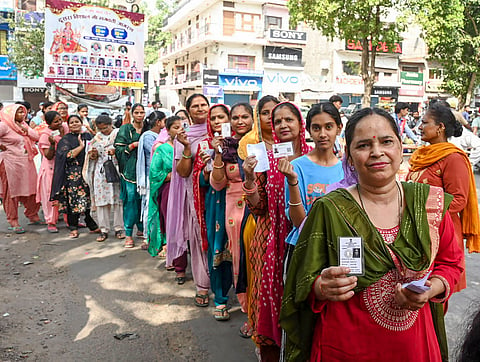

A few days ago, the online news portal Wire uploaded an astonishing report on the ongoing 2024 general elections. They claimed that the number of votes in the first five phases had dropped by almost 20 crore in comparison to the 2019 elections. Of course, that was nowhere near true.
The website later changed the story saying they had miscalculated since they "considered the number of eligible voters released by the PIB for each phase of the 2019 elections, instead of the absolute numbers of the post-election turnout to arrive at an incorrect conclusion". Their newer numbers were incorrect too. But by then the screenshots of their original report were shared in WhatsApp groups and picked up by eager YouTubers. It added to the already large number of conspiracy theories about what is happening at the Election Commission.
For anyone who cares, here is the truth. In the first five phases, the number of votes is actually up by some 2 crore, not down by 20 crore. But how many people will go to the website of the Election Commission, download the official report, add up the numbers for 427 seats that have voted so far, and check? It is far too boring for almost anyone. And online content creators know exactly that. That is why the conspiracy theories.
Take the case of “Form 17C,” which is now suddenly internet famous. Why is the Election Commission hiding it from us? But they are not. There are some 10.5 lakh polling stations in India. Wherever voting has been completed, the candidates or their polling agents have already been given Form 17C, containing the booth level data. So lakhs of people already have this form. If they are serious, they can upload it anywhere they want.
But why won’t the Election Commission upload these forms on their own website? Okay, it was never done before, but so what? Let us have even more transparency. You could, but let us be clear about what the conspiracy theorists are doing. Next they will ask for hourwise data to be uploaded. After that, maybe CCTV footage of voting at each booth, from at least six different camera angles. This is not about transparency, but trolling. And anytime the EC turns down any request, it can be used to create fear that the election is rigged. This is dangerous. It seems they want mass unrest if the election does not go their way.
Through a massive social media outreach, they are pumping audiences full of theories that the EVMs are rigged. After 2014, many loyalists of the old establishment lost their jobs in regular media. They are now forced to live off clicks on YouTube. And they know that fear sells. Even respectable newspapers and television channels have run misleading headlines about how elections are happening. Such as the Modi government bringing a bill to “remove” the Chief Justice from the panel for appointing election commissioners. They have replaced the Chief Justice with a union minister, who will obviously go along with the Prime Minister. This gives the government a 2:1 majority on the panel.
But should you really put it like that? In the entire history of India, the Chief Justice has never actually sat on such a panel. In fact, there was no panel. The Election Commissioner was always picked by the Prime Minister alone. Does this mean that every general election since 1952 was unfair? In 2023, the Supreme Court created a panel with the Prime Minister, the Chief Justice and the Leader of the Opposition. This was a temporary arrangement until parliament brought a law. So the Modi government brought a law. For the first time ever, the bill gave the leader of the opposition a voice in picking election commissioners.
As for the 2:1 arrangement which favours the government, it is standard. This is exactly how the Chief Information Commissioner is appointed, for instance. A panel consisting of the Prime Minister, the Leader of the Opposition, and another union minister. That is according to the RTI act passed by the previous UPA government. Again, how many people would check these legal details? So when the media leaves out this context, it only creates fear.
We have to talk here about the big tech platforms, most of them based in the United States. Now that everyone depends on clicks, these platforms are effectively the biggest players in the media space in India. We have seen how these platforms took extreme measures in the United States, to control the spread of misinformation about elections. They have done almost nothing of that sort in India. As we saw in the United States, such misinformation can lead to terrible things. Who could have imagined that there would be an attempt in 2021 to overthrow the US government by physically attacking Capitol Hill?
In India, the fears about the election are being fanned in exactly the same way. On the ground, these fears are slowly turning into real anger. Right now, an online mob is being prepared. If these people do not get what they want, will they accept the results on June 4? Will this online mob turn towards real world violence? We certainly hope not. But it is time to start worrying.
(Abhishek Banerjee is an author and columnist. Karuna Gopal is President, Foundation for Futuristic Cities and BJP National In-charge for Women Policies & Research.)
(Views are personal.)